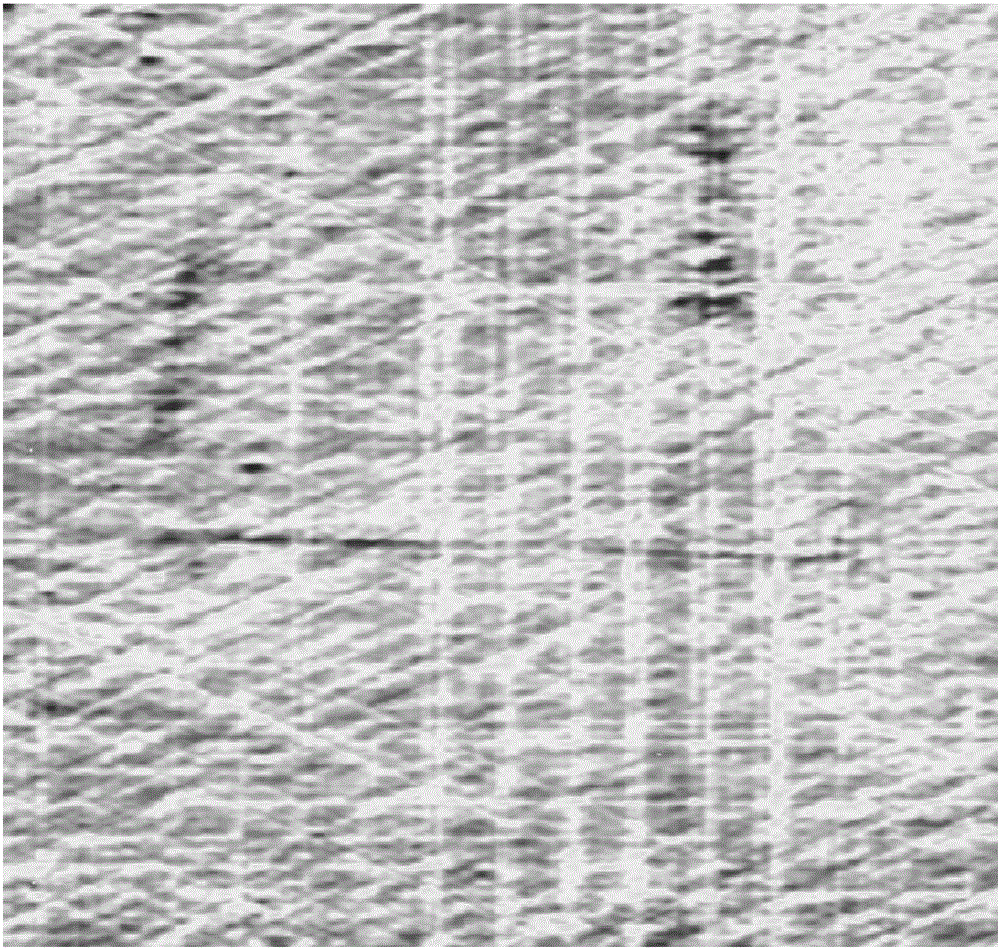Curing method for large-thickness fiber-reinforced epoxy resin matrix composite material
A technology of epoxy resin and composite materials, which is applied in the field of composite material parts, can solve the problems of long curing period, difficult and complicated optimization, low thermal conductivity and other problems of large thickness composite materials, and achieve the reduction of microcracks and stress concentration, and low voids Efficiency, uniform internal quality
- Summary
- Abstract
- Description
- Claims
- Application Information
AI Technical Summary
Problems solved by technology
Method used
Image
Examples
Embodiment 1
[0029] On the flat steel mold, the carbon fiber reinforced epoxy resin-based prepreg with a size of 500×500mm is paved, and the paving is completed when the thickness reaches 16mm. Lay the isolation film, air felt and vacuum bag on the prepreg, and stick the vacuum bag on the mold with high temperature resistant adhesive tape, use the vacuum device to draw out the gas in the vacuum bag, and maintain the negative pressure state, when the vacuum bag After the vacuum degree stabilizes, the packaging of the prepreg is completed. Place the encapsulated prepreg in an autoclave, and set the pressure of the autoclave to 0.5MPa. First, in the temperature rise step from room temperature to 90°C, the temperature rises to 90°C at a rate of 2°C / min. Raise the temperature up to 180°C at a rate of 0.1°C / min in the temperature rise step from 90 to 180°C, and keep the temperature at a rate of 2°C / min for 120 minutes and then drop it below 23°C, take out the prepreg to obtain a composite materi...
Embodiment 2
[0031] On the curved aluminum mold, lay carbon fiber plain weave fabric, and when the thickness reaches 60mm, the laying is completed. After heat setting, epoxy resin is injected into the laid fabric by using resin vacuum introduction technology, and after packaging, the fabric is placed in an oven. In the oven, the heating rate is first raised to 90°C at a rate of 0.3°C / min. Use a heating rate of 1°C / min to rise to 110°C, then use a heating rate of 1.5°C / min to rise to 120°C, and keep at this temperature for 120 minutes, then drop to 100°C at a rate of 0.3°C / min, and then use When the speed of 2°C / min is reduced to below 23°C, composite parts with qualified quality can be obtained.
Embodiment 3
[0033] On the composite material mold, the aramid fiber-reinforced epoxy resin-based prepreg with a diameter of 1200 mm is paved, and the paving is completed when the thickness reaches 80 mm. Lay the isolation film, air felt and vacuum bag on the prepreg, and stick the vacuum bag on the mold with high temperature resistant adhesive tape, use the vacuum device to draw out the gas in the vacuum bag, and maintain the negative pressure state, when the vacuum bag After the vacuum degree stabilizes, the packaging of the prepreg is completed. Place the packaged prepreg in an autoclave, set the pressure of the autoclave to 0.9MPa, first raise the temperature to 80°C at a rate of 0.1°C / min, and then increase the rate of temperature to 80°C at a rate of 0.5°C / min. 100°C, then rise to 120°C at a rate of 1°C / min, and keep at this temperature for 60 minutes, then drop to 100°C at a rate of 0.1°C / min, and then drop to 23°C at a rate of 0.5°C / min Next, the prepreg is taken out to obtain a c...
PUM
| Property | Measurement | Unit |
|---|---|---|
| thickness | aaaaa | aaaaa |
Abstract
Description
Claims
Application Information
 Login to View More
Login to View More - R&D
- Intellectual Property
- Life Sciences
- Materials
- Tech Scout
- Unparalleled Data Quality
- Higher Quality Content
- 60% Fewer Hallucinations
Browse by: Latest US Patents, China's latest patents, Technical Efficacy Thesaurus, Application Domain, Technology Topic, Popular Technical Reports.
© 2025 PatSnap. All rights reserved.Legal|Privacy policy|Modern Slavery Act Transparency Statement|Sitemap|About US| Contact US: help@patsnap.com


